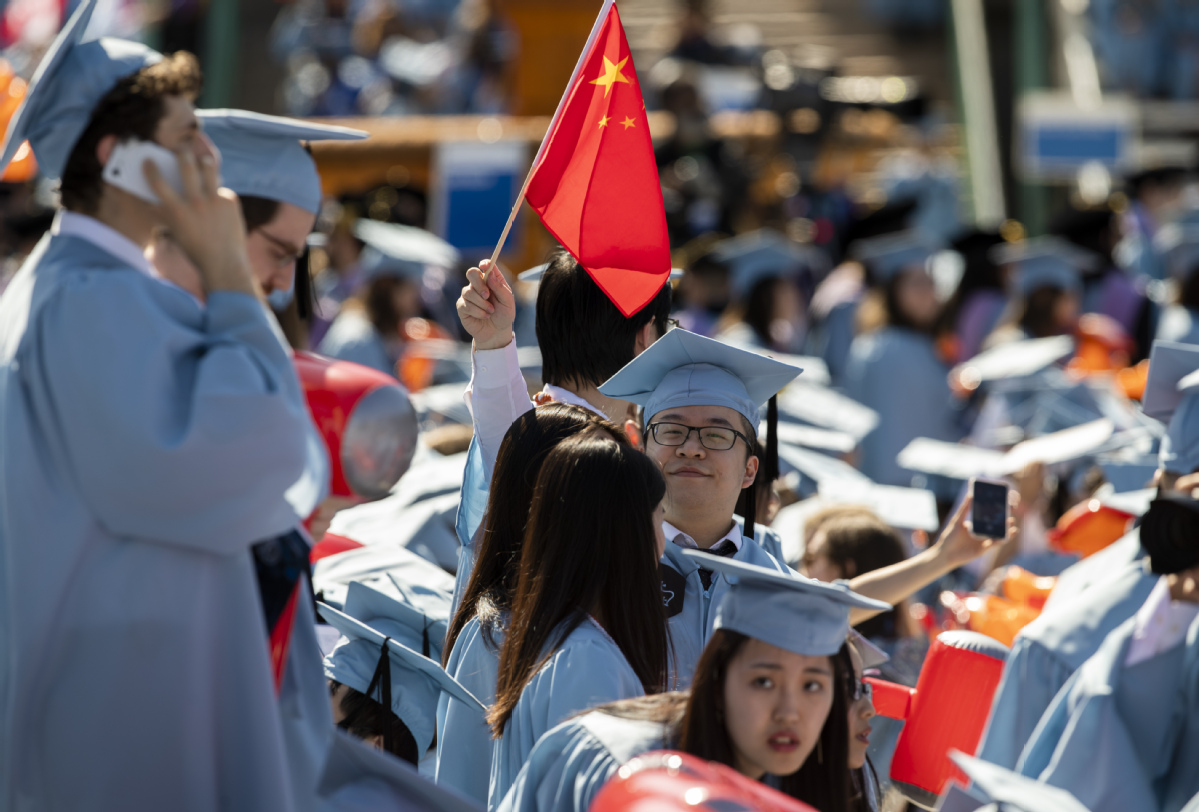Educational exchange benefits both sides
By LIA ZHU in San Francisco | China Daily Global | Updated: 2022-04-15 11:36

Since the normalization of relations between the United States and China in the late 1970s, the growth in educational exchanges has been remarkable and also has improved people-to-people ties, the core of the US-China relationship.
The first group of Chinese students arrived in the US in December 1978, and a dozen US students and scholars visited China the following month, marking the resumption of exchange activities between the two countries after a 30-year pause.
In 1985, US President Ronald Reagan and Chinese President Li Xiannian signed an agreement "to provide opportunities for cooperation and exchange in educational fields based on equality, reciprocity, and mutual benefit".
Since then, China has been among the top places of origin sending students to the US. In the dozen years prior to the COVID-19 pandemic, the number of Chinese students studying in the US soared by 450 percent, from 67,700 in 2006 to 372,500 in 2019, according to data from the Institute of International Education (IIE).
More than 317,000 Chinese students enrolled in US colleges and universities in the 2020-21 academic year, according to the IIE's Open Doors Report on International Educational Exchange released in November.
Despite the decline in Chinese enrollment in US universities in recent years, China remains the largest source of international students in the US, and the US still hosts the largest number of Chinese students studying outside of China.
The number of Chinese scholars teaching and performing research at US institutions has followed a similar, general upward trend. China is also the largest sending country for foreign scholars, including faculty members, visiting lecturers and researchers.
The number of students has been steadily increasing in both directions of the exchange. As China began its economic reform and opening-up, US students were welcomed to study in China.
The number of US students studying in China increased by more than 500 percent over the past decade, making China one of the top 10 study-abroad destination countries for US students.
In recent years, China has become increasingly popular as a destination country for US students. A total of 11,639 US students studied in China in 2018-19 before the pandemic, compared with 1,396 students in 1995-96, according to the Open Doors Report.
The US-China educational exchange is "very important" to what he called a cosmopolitan education as it helps prepare students "to live full and meaningful lives in the 21st century", said Jeffrey Lehman, vice-chancellor of NYU Shanghai, a branch campus of New York University, at a recent forum celebrating the 50th anniversary of the signing of the Shanghai Communique.
Universities set up between US and Chinese partners, such as NYU Shanghai, experienced rapid growth after the Chinese government began encouraging foreign collaboration in higher education in the 1990s.
American institutions have the most such campuses in China. The earliest Sino-foreign joint school, the Hopkins Nanjing Center, was established in 1986. So far, 41 overseas institutions have set up branch campuses in China, with 15 of them from the US, according to data gathered by the Cross-Border Education Research Team, at the State University of New York in Albany.
Higher education can also serve as a bridge for the two peoples to better understand each other and improve the bilateral relationship, said Lehman.
"While they (Chinese students) were at American universities, they were teachers. They taught their American classmates what China's really like and what Chinese people are really like. They forged friendships and partnerships that will last a lifetime," he said.
"Then when they came back to China, they were again teachers: They taught their fellow citizens about what Americans are really like, and what the United States is really like. They became a channel for mutual understanding," he continued.
























